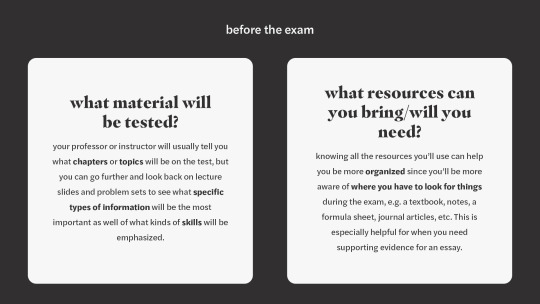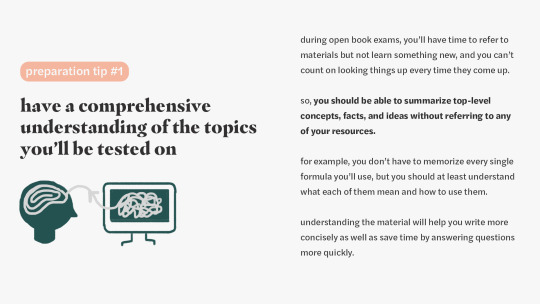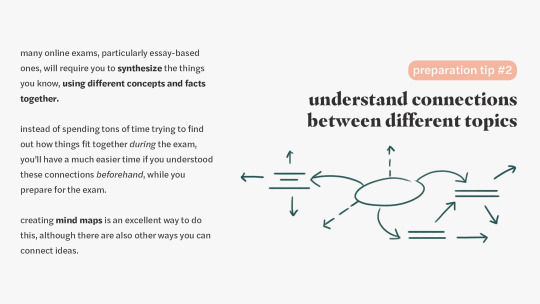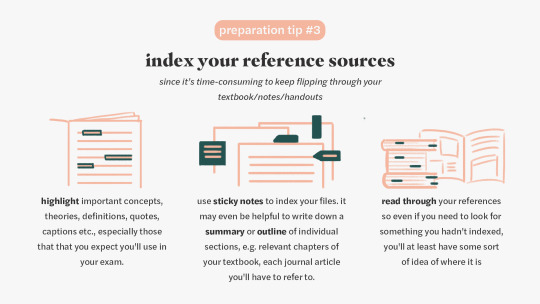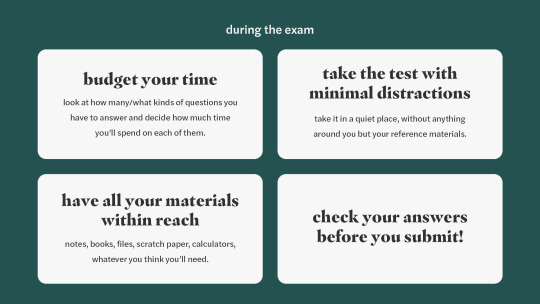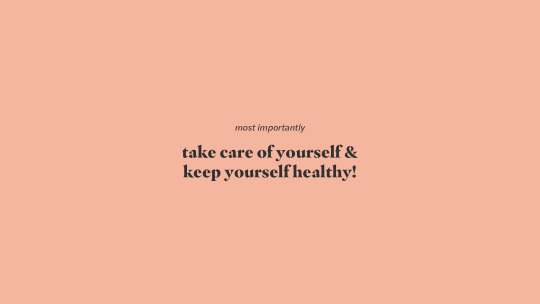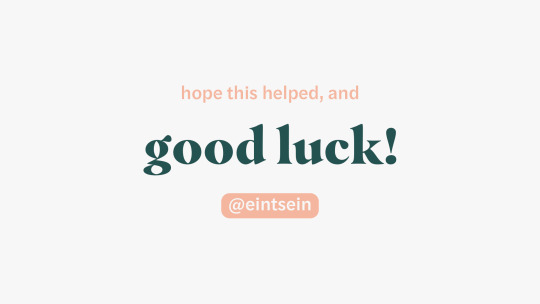Hey y'all! I'm Domonique and I love learning about everything. I'm a Mom of 3 boys under 6, I'm 28, and I work in IT whiling running multiple businesses on the side. I used to feel pressured to niche down and specialize in one subject or topic. As I've gotten older, I decided that I want to pursue all my interests to my heart's content and don't care what people think about that. Join me and let's learn about ALL THE THINGS!!!
Don't wanna be here? Send us removal request.
Text
My brain so much isn't working that I had to use Google Translate to read the dam' text out loud. And while I'm at it! (I was writing a post for a week, but it's too long, I couldn't ever finish it :P) It's a quick, messy post because I have to study. EDIT: It took me two afternoons to finish.
ADHD study tips!
- BeLineReader is some super useful, it colors text gradient, has an open dyslexic font, and clean/reader mode! (Tho it "expires" after a few weeks, and you have to delete and download it again.)
- Grammarly is good, but it sure can get annoying with it telling you you misplaced a comma, but refusing to tell where.
- Rereading the notes you took in class is always better than nothing. Pro tip: reread them before going to bed, and right before class, because our brains process information at night.
- When you have to do an essay/PPT, Ctrl+F is your friend. Also, write down questions or keywords you want it to be about. Write a "first draft," a little messy, that only you (but you do) understand, and only when done start to reword it with "fancier words."
Include the terms you've learned in class. Teachers like to hear themselves back.
- If fancy words, I have two sites for you: scribens.com (a grammar checker), rhymezone.com (it has everything word-related you could ever need).
- Highly recommend Weava Highlighter too! You can highlight and save text from any site or PDF and even add notes.
- When doing a PPT use the automatic design ideas and pictures, pictures, pictures - it's easy and will look a lot better.
- Copy-past sentences from your sources and reword them, change the word order on the slide, use the original sentence when presenting.
- Use Comic Sans for writing notes/essays, but if not comic sans, some neat font. Copy-past a text from Tumblr into a document and you'll get the font Tumblr uses. (Which is apparently too long for me to include)
I like Courier New too.
- Have a paper for "junk thoughts" - write them down, but only deal with them later.
- Look for the fun things. Documentaries, history movies, colorized historical recordings exist.
-Tie it up with interests! You like making neat Tumblr posts? Great! Make neat Tumblr posts! IV. Henrick Moodboard. Make memes about it.
Explain it to someone in the most basic "meme language." "And then he goes..." "*something*" "Pathetic" "XY left the chat."
How fun is that??! (especially for literature and history)
- The effort rule (based on some experiment) the more effort you put into it, the more likely you will remember it. Sounds ridiculous, but...
put down your notebook in one corner of the room so you have to walk a little with every sentence, and take notes this way.
- Another ridiculous way to remember stuff is to place the information in unique places, so you will remember it for sure. Write that formula on an empty toilet paper roll no one had the energy to throw in the trash. Put a sticky note on the cheese in the fridge.
- I'm the kind of person who gets motivation from not doing the notes for myself but to make videos on the topic for the "next generations," because our school system su©ks.
- Have a document/bookmark folder with all the stuff you'll need!!!(links I mean) And go by the path of the links.
Like this:
X'o clock - Y'o clock - History, ancient Greece
[link of source for studying] [link of source for studying] [link of source for studying]
Y'o clock - Z'o clock - Rest
[link of a Tumblr blog you want to check out for new posts] [link of a short video you want to watch]
Make starting only take one/two clicks. Use a site blocker and only whitelist the few pages you'll need for 1) studying, and 2) in the breaks.
- This thing can automatically open a new tab (a link) at a given time.
- For note-taking in class: use an erasable pen.
- In the classes where the teacher simply can't explain, only jot down the keywords and look them up later. Check your book for illustrations and definitions. Works for just-pass-will-forget-everything-after-the-test subjects.
- Illustrate your notes. I like to doodle little figures in my notebook, it 1) keeps my hands busy
2) as I'm a visual type, it helps me remember where was a piece of information in my notes located, and
3) it forms a link in between dry and heavy information. (It personalizes things [countries, groups, ideologies], visualizes concepts, and brings color into events)
This is what my notes look like: (for strucutre - tho I love philosophy, so with my not-favorite subjects it's obviously a bit different...)
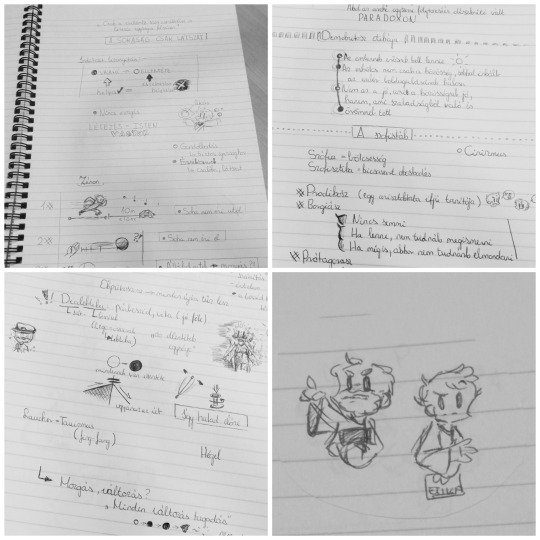
- As for sensory things:
☀️ Let there be light! Sunlight or some lamps with a cozy mood.
💻 "Play" with the settings of your screen, turn down the brightness, the saturation, etc.
👕 If you find it refreshing, maybe take a bath/shower before, or change your clothes to more comfortable ones.
🍃 Let in some fresh air, make sure the room isn't too hot, nor too cold.
🍹 Have a bottle of water by your side, so you don't forget to drink.
🎧 If you need some background noise, there are tons of ambient sound channels on youtube and there's also MyNoiseNet.
🎼 Or put on a music/playlist with only a few tracks looped. Or instrumental music. Or music in a foreign language. Just imagine learning history while some cinematic classical music plays. XD
If you feel bad, here's this site that might help you figure out why.
I plan to make other ADHD and autism posts soon. Till then, *casually salutes* I hope I helped some! :)
2K notes
·
View notes
Text
"You have my full attention" she said with 25 racing thoughts, 5 distinct noises and a buzzing sound that no one seemed to notice.
3K notes
·
View notes
Text
Tips for Living With ADHD (From Someone Who Actually Has It)
There is a lot of advice floating around online for how to manage the symptoms of ADHD.
Most of it is bad.
A lot of the advice available for coping with ADHD has been written by people who don’t actually have it. Much of it is either aimed at parents raising ADHD children, or it simply amounts to “just try harder and figure out how to remember things better”. It’s hard for people who don’t have ADHD to understand that there’s more to it than “being easily distracted”, and the advice they give for managing the disorder is sometimes woefully out of touch.
Luckily, I have ADHD, and I’ve had to deal with it all my life. ADHD has not prevented me from getting a master’s degree, writing a novel, keeping my apartment clean or advancing in my career, because I’ve figured out some coping strategies like:
Train yourself to do the “keys, phone, wallet” dance. Misplacing things sucks, and it happens a lot with ADHD. To keep at least the important things from going missing, I have taught myself to physically tap my keys, wallet and phone before I leave any location. Getting into this habit took a few weeks, but now it’s muscle memory - and it’s saved me a lot of headaches over the years.
Start a Bullet Journal or find a good day planner. My bullet journal is my life. For those of you who aren’t familiar with them, bullet journals are basically grid notebooks written with a special system that lets you quickly keep track of and organize all the things you need to remember. Their customizability lets you organize things in a way that makes sense to your brain (and there’s no need to make them as fancy as the ones on Instagram). Plus, the fact that it’s not an app or online tool helps me avoid distraction.
Do a daily 15-minute sweep of your apartment. Household chores can quickly get away from you, until your apartment is so overwhelmingly gross that you don’t even know where to start. Keep things to a dull roar with a fifteen-minute daily sweep - bag up garbage, move the dishes to the kitchen, throw laundry into a hamper, wipe up obvious spills. When your space is less overwhelming, it’s easier to tackle bigger chores when you need to.
Set reminders to reply to emails and messages. If I don’t answer a message immediately, under normal circumstances, there’s a 50/50 chance I’ll never remember to answer it. If I know I need to reply to a message, I’ll set a quick reminder in my phone to respond - Siri can set reminders for me instantly, and it helps a lot with communication.
Prioritize tasks and do the most important ones first. My brain has a limited ability to concentrate on tasks that I’m not hyper-fixated on. Attention is a finite resource for me - once I start to get tired or burnt out, the odds of me completing a task I’m not interested in drops to almost nothing. Order your tasks by importance, not difficulty; sometimes I’m only able to do 1-2 very simple things in a day, and it’s important to make sure those are the things that most needed to get done.
Use the Pomodoro method for getting things done. I need pressure and deadlines to get things done, which is sort of difficult to replicate after college - the only person who cares if I work on my art or write a novel is me. So I use the Pomodoro method - this is basically where you set a timer for 25 minutes, work until it goes off, set a time for 5 minutes, relax until it goes off, and so on. There are even apps like “Focus To-Do” that automatically use Pomodoro timers and can even track how many you do on each task per day.
Put reminders of daily tasks in places where you can see them. I have several houseplants, and the only reason those houseplants are alive is because they have brightly-coloured sticky notes on them that say WATER ME EVERY FRIDAY. Putting up visual reminders might seem tacky or childish, but if that’s what works for you, then that’s what you need to do. Putting a chore chart for yourself on the fridge is way less embarrassing than getting a pest problem because you lost track of chores.
Tackle chores and cleaning in stages. Deep-cleaning my whole apartment in one day is simply not going to happen. It’s just not. So when it’s time to deep-clean, I spread it out in stages - one day is the day to tackle the fridge, the next day is the bathrooms, the day after that is closet organization, etc. Breaking things into manageable chunks is how I’ve tackled everything from my graduate thesis to moving - I accept that I need to spread big tasks out across more days than other people do, and adapt accordingly.
Audiobooks and podcasts are your friend. If I’m doing a task that doesn’t require a lot of concentration - like mopping, or dishes, or walking the dog - my mind wanders… and it often wanders to another task I could be doing, causing me to abandon what I’m working on. I’ve found that the best way to prevent that is to keep my mind occupied. Throwing on some headphones and listening to an audiobook (which I rent from the Libby app for free!) has been a win-win situation for me; it helps me stay on-task, and it helps me reach my reading goal every year.
ADHD can make it difficult to thrive in a world that wasn’t built for our brains. But when you find the right strategies, it’s possible to accomplish your dreams and navigate the world in your own way.
2K notes
·
View notes
Text
a form of self love is getting rid of the urge to want to announce things publicly, and celebrating them silently or privately.
25K notes
·
View notes
Text

I'm currently learning Italian and Japanese. How about you?
52 notes
·
View notes
Text
The faces of child marriage

Tehani, 8, Yemen. “Whenever I saw him, I hid. I hated to see him,” Tehani (in pink) recalls of the early days of her marriage to Majed, when she was 6 and he was 25. The young wife posed for a portrait with former classmate Ghada, also a child bride, outside their home in Hajjah.

Destaye, 11, and Addisu, 23, Ethiopia. Addisu and his new bride Destaye are married in a traditional Ethiopian Orthodox wedding in the rural areas outside the city of Gondar, Ethiopia. Community members said that because of his standing as a priest, Addisu’s bride had to be a virgin. This was the reason Destaye was given to him at such a young age.

Rajani, 5, India. Long after midnight, Rajani is roused from sleep and carried by her uncle to her wedding. Child marriage is illegal in India, so ceremonies are often held in the wee hours of the morning. It becomes a secret the whole village keeps, explained one farmer.

Bishal, 15, and Surita, 16, Nepal. Bishal accepts gifts from visitors as his new bride, Surita, sits bored at her new home. Here in Nepal, as in many countries, not only girls, but boys too are married young.

Faiz, 40, and Ghulam, 11, Afghanistan. Ghulam and Faiz sit for a portrait in her home before their wedding in Afghanistan. According to the U.S. Department of State report “Human Rights Practices for 2011,” approximately 60 percent of girls were married younger than the legal age of 16. Once the girl's father has agreed to the engagement, she is pulled out of school immediately.

Sarita, 15, India. Sarita is seen in tears before she is sent to her new home with her new groom. The previous day, she and her 8-year-old sister Maya were married to sibling brothers.

Leyualem is transported by mule to her new home on her wedding day. The men later said the cloth was placed over her head so she would not be able to find her way back home, should she want to escape the marriage.

Asia, 14, Yemen. Asia washes her newborn at home in Hajjah while her 2-year-old daughter plays. Asia is still bleeding and ill from childbirth, yet has no knowledge of how to care for herself or access to maternal health care.

Mejgon, 16, Afghanistan. Mejgon weeps in the arms of her case worker near fellow residents at an NGO shelter run by Afghan women in Herat, Afghanistan. Mejgon’s father sold her at the age of 11 to a 60-year-old man for two boxes of heroin.
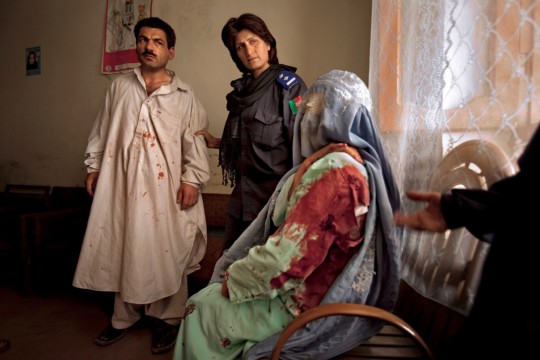
Jamila, 15, Afghanistan. Kandahar policewoman Malalai Kakar arrests a man who repeatedly stabbed his wife, 15 and mother of two children, for disobeying him. When asked what would happen to the husband for this crime, “Nothing,” Kakar said. “Men are kings here.” Kakar was later killed by the Taliban.
7K notes
·
View notes
Text
i know there’s a lot going on but ICE are now one step closer to literally creating gas chambers. they are spraying a chemical called HDQ neutral roughly 100 times a day, every 15 minutes at the adelanto detention center (one of the biggest in the country). people are getting rashes, headaches, their insides are bleeding, etc. the guards are wearing gloves and masks but the detainees have NOTHING. and here’s a quick reminder - america inspired the nazis to create gas chambers when they gassed latino people during the 1917 bath riots.
here’s a petition to sign. it’s close to it’s goal. if there’s anything else we can do to help i’ll update this post.
122K notes
·
View notes
Link
if you can, share or donate to the official fund for george floyd’s 6 year old daughter. it was organized by the family’s legal team and shared by his best friend, so it’s legitimate. the least we can do is make sure his baby is set for life.
23K notes
·
View notes
Text
Yes, being in a relationship will show you all the issues that you have. But once it comes out that you have issues, they aren’t for your partner to fix, they are for you to fix. Realize you have anger issues? Work it out, don’t take it out in your partner. Realize you have trust issues? Work it out, don’t burden your partner with that. Realize you have insecurities? Work on your self esteem, don’t expect your partner to validate your existence.
Your commitment to your partner is also a commitment to work on yourself. They work on them, you work on you, and you both come together committed to giving your best. And of course, things happen. Sometimes your best also includes mess. But the important thing is to not make it a habit that the person you’re with is someone you use to heal you. That’s not right.
47K notes
·
View notes
Photo
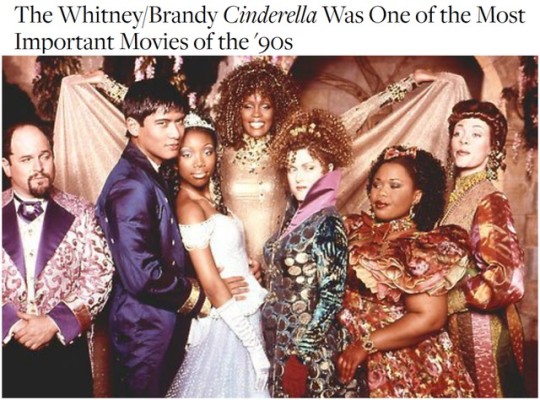

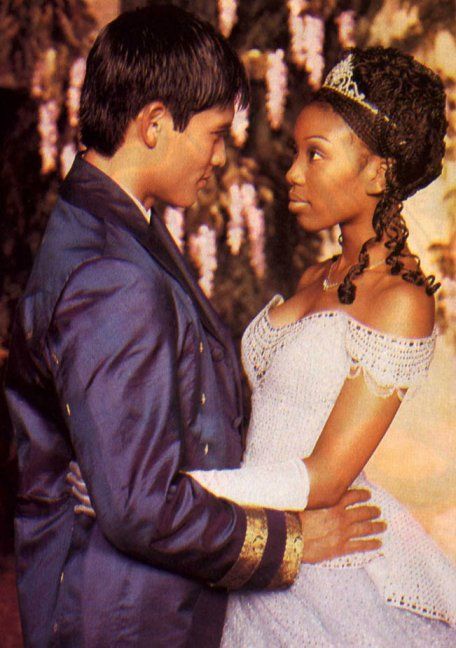
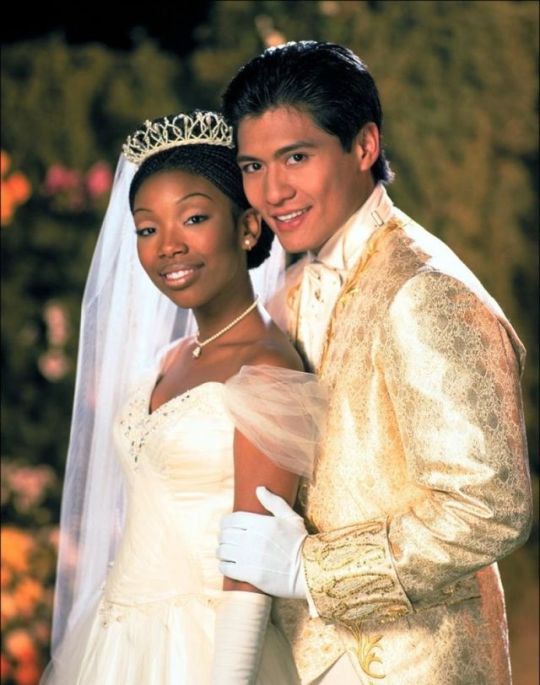

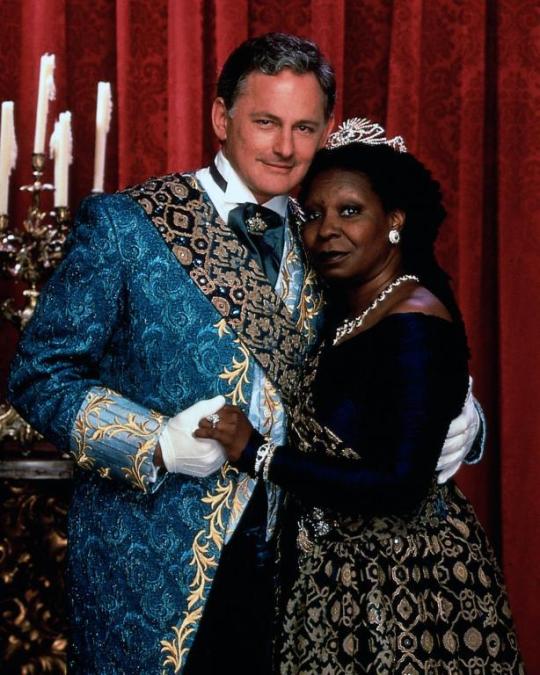




The most iconic version of Cinderella (starring Brandy and Whitney Houston) premiered 20 years ago
131K notes
·
View notes
Text
How to determine if a kids injury is serious or not
offer them “medicinal chocolate” if they stop crying it’s fine if they carry on crying/refuse the chocolate then it’s serious
88K notes
·
View notes
Photo

hello!! if ur having trouble with literary devices, fear not bc here’s a list of the most commonly common devices used with definitions and examples. i hope this helps :-)
ps: here is a downloadable PDF file
DEFINITION OF LITERARY DEVICES: narrative techniques that add texture, energy and excitement to the narrative, grip the reader’s imagination and convey information.
ALLEGORY:
A symbolism device where the meaning of a greater, often abstract, concept is conveyed with the aid of a more corporeal object or idea being used as an example. Usually a rhetoric device, an allegory suggests a meaning via metaphoric examples.
Example: Faith is like a stony uphill climb: a single stumble might send you sprawling but belief and steadfastness will see you to the very top.
ALLITERATION:
literary device where words are used in quick succession and begin with letters belonging to the same sound group. Whether it is the consonant sound or a specific vowel group, the alliteration involves creating a repetition of similar sounds in the sentence. Alliterations are also created when the words all begin with the same letter.
Example: The Wicked Witch of the West went her own way.
ALLUSION:
Events or characters from another story in her own story with the hopes that those events will add context or depth to the story she’s trying to tell.
allusions are often to very famous works such as the Bible or Shakespearean plays.
doesn’t have to specifically name the character or event it’s referring to
Example: Night after night our hero lay in bed with the flu, hacking mucus and blood and seeing behind his eyelids the angels or devils come to collect him. But one morning, like Lazarus, he was whole again… (allusion to Lazarus who famously rose from the dead)
ASSONANCE:
Takes place when two or more words close to one another repeat the same vowel but start with different consonant sounds
Repetition of only vowel sounds. Assonance is the opposite of consonance, which implies repetitive usage of consonant sounds.
Example: Men sell the wedding bells.
DICTION:
Author’s choice of words
When describing the events of her story, an author never has just one word at her disposal. Rather, she must choose from many words that have similar denotative meanings (the definition you’d find in a dictionary), but different connotative meanings (the associations, positive or negative with a given word).
Example: imagine that a child in a story comes home from school and tells his parents about his day.
· 'Tommy made fun of me, so I nicked his eye with a stick.’
· 'Tommy made fun of me, so I poked his eye with a stick.’
· 'Tommy made fun of me, so I stabbed his eye with a stick.’
· 'Tommy made fun of me, so I gouged his eye with a stick.’
words nicked, poked, stabbed and gouged all have similar denotative meanings, but notice how an author’s choosing one or the other would drastically affect how we understand how well Tommy fared.
EPIGRAPH:
a work where the author under the title has included a quotation from some other work; often the quotation is in italics.
Like an allusion, an epigraph is a reference to another work that an author hopes will help readers understand her own work.
Unlike an allusion, an epigraph stands apart from the text itself rather than being included in it.
Example: T.S. Eliot’s famous poem ‘The Love Song of J. Alfred Prufrock.’ The epigraph is from Dante’s Inferno…
If I but thought that my response were made to one perhaps returning to the world, / this tongue of flame would cease to flicker. / But since, up from these depths, no one has yet / returned alive, if what I hear is true, / I answer without fear of being shamed.
FORESHADOWING:
author hints at the ending of or at an upcoming event in her story without fully divulging it
Example: Ernest Hemingway’s famous novel A Farewell to Arms, a key character dies while it’s raining.
To hint at that death, Hemingway earlier in the book includes a scene where the character admits that she is afraid of the rain because sometimes she sees herself dead in it.While this is just an irrational vision, it also gives the reader an ominous detail and hints at an event that might be to come.
HYPERBOLE
uses specific words and phrases that exaggerate and overemphasize the basic crux of the statement in order to produce a grander, more noticeable effect.
purpose of hyperbole is to create a larger-than-life effect and overly stress a specific point. Such sentences usually convey an action or sentiment that is generally not practically/ realistically possible or plausible but helps emphasize an emotion.
Examples: “I am so tired I cannot walk another inch” or “I’m so sleepy I might fall asleep standing here”.
IMAGERY:
When an author chooses words for their connotative associations (see the above discussion of ‘diction’), she chooses sensory details for the associations or tones they evoke
Example: Theodore Roethke’s famous poem, ‘My Papa’s Waltz,’ we see a young boy dance with his drunken father. It’s a happy memory for the boy, but also the poem hints at the father’s dangerous condition. One of the ways Roethke achieves this is through his selection of imagery.
The whiskey on your breath
Could make a small boy dizzy;
But I hung on like death:
Such waltzing was not easy.
INTERNAL RHYME:
practice of forming a rhyme in only one lone line of verse
also known as the middle rhyme because it is typically constructed in the middle of a line to rhyme with the bit at the end of the same metrical line.
Example: The line from the famed poem Ancient Mariner, “We were the first that ever burst”.
IRONY:
playing around with words such that the meaning implied by a sentence or word is actually different from the literal meaning.
used to suggest the stark contrast of the literal meaning being put forth. The deeper, real layer of significance is revealed not by the words themselves but the situation and the context in which they are placed.
Example: Writing a sentence such as, “Oh! What fine luck I have!”. The sentence on the surface conveys that the speaker is happy with their luck but actually what they mean is that they are extremely unhappy and dissatisfied with their (bad) luck.
JUXTAPOSITION:
literary device wherein the author places a person, concept, place, idea or theme parallel to another.
two directly or indirectly related entities close together in literature is to highlight the contrast between the two and compare them. This literary device is usually used for etching out a character in detail, creating suspense or lending a rhetorical effect.
Example: A woman giving birth on a battle field in the middle of a war would be juxtaposition. This scene would compare the beauty of life beginning to the gore of lives ending by force.
METAPHOR
one of the most extensively used literary devices. A metaphor refers to a meaning or identity ascribed to one subject by way of another. In a metaphor, one subject is implied to be another so as to draw a comparison between their similarities and shared traits. The first subject, which is the focus of the sentences is usually compared to the second subject, which is used to convey a degree of meaning that is used to characterize the first. The purpose of using a metaphor is to take an identity or concept that we understand clearly (second subject) and use it to better understand the lesser known element (the first subject).
Example: “Henry was a lion on the battlefield”. This sentence suggests that Henry fought so valiantly and bravely that he embodied all the personality traits we attribute to the ferocious animal. This sentence implies immediately that Henry was courageous and fearless, much like the King of the Jungle.
PERSONIFICATION
one of the most commonly used and recognized literary devices. It refers to the practice of attaching human traits and characteristics with inanimate objects, phenomena and animals.
Example: “The raging winds” “The wise owl” “The warm and comforting fire”
ONOMATOPOEIA
words whose very sound is very close to the sound they are meant to depict. In other words, it refers to sound words whose pronunciation to the actual sound they represent.
Example: Clack, Clack, the gunshots went off during a drive by in Compton!!
PARADOX
use of concepts or ideas that are contradictory to one another, yet, when placed together hold significant value on several levels. The uniqueness of paradoxes lies in the fact that a deeper level of meaning and significance is not revealed at first glance, but when it does crystallize, it provides astonishing insight.
Example: High walls make not a palace; full coffers make not a kin
POINT OF VIEW
Manner in which a story is narrated or depicted and who it is that tells the story.
determines the angle and perception of the story unfolding, and thus influences the tone in which the story takes place.
o Objective Point of View - writer tells what happens without stating more than can be inferred from the story’s action and dialogue. The narrator never discloses anything about what the characters think or feel, remaining a detached observer.
o Third Person Point of View Here the narrator does not participate in the action of the story as one of the characters, but lets us know exactly how the characters feel. We learn about the characters through this outside voice.
o First Person Point of View In the first person point of view, the narrator does participate in the action of the story. When reading stories in the first person, we need to realize that what the narrator is recounting might not be the objective truth. We should question the trustworthiness of the accounting.
o Omniscient and Limited Omniscient Points of View A narrator who knows everything about all the characters is all knowing, or omniscient.
o A narrator whose knowledge is limited to one character, either major or minor, has a limited omniscient point of view.
RHYME SCHEME
Practice of rhyming words placed at the end of the lines in the prose or poetry.
Order in which particular words rhyme.
SATIRE
Practice of making fun of a human weakness or character flaw.
Inclusive of a need or decision of correcting or bettering the character that is on the receiving end of the satire. In general, even though satire might be humorous and may “make fun”, its purpose is not to entertain and amuse but actually to derive a reaction of contempt from the reader.
SIMILE
Referring to the practice of drawing parallels or comparisons between two unrelated and dissimilar things, people, beings, places and concepts.
Using similes a greater degree of meaning and understanding is attached to an otherwise simple sentence. The reader is able to better understand the sentiment the author wishes to convey.
Key words: ‘as’ or ‘such as’ or ‘like’.
SYMBOL
Contains several layers of meaning, often concealed at first sight, and is representative of several other aspects, concepts or traits than those that are visible in the literal translation alone.
is using an object or action that means something more than its literal meaning.
Example: The phrase “a new dawn” does not talk only about the actual beginning of a new day but also signifies a new start, a fresh chance to begin and the end of a previous tiring time.
SYNECHDOCE
uses a part of something to refer to the whole or vice versa. It is somewhat rhetorical in nature, where the entire object is represented by way of a fraction of it or a fraction of the object is symbolized by the whole.
Example: “Weary feet in the walk of life”, does not refer to the feet actually being tired or painful; it is symbolic of a long, hard struggle through the journey of life and feeling low, tired, unoptimistic and ‘the walk of life’ does not represent an actual path or distance covered, instead refers to the entire sequence of life events that has made the person tired.
SYNTAX
actual way in which words and sentences are placed together in the writing. Usually in the English language the syntax should follow a pattern of subject-verb-object agreement but sometimes authors play around with this to achieve a lyrical, rhythmic, rhetoric or questioning effect. It is not related to the act of choosing specific words or even the meaning of each word or the overall meanings conveyed by the sentences.
Example: The sentence “The man drives the car” would follow normal syntax in the English language. By changing the syntax to “The car drives the man”, the sentence becomes awkward.
SOURCES
http://study.com/academy/lesson/literary-devices-definition-examples-quiz.html
http://literary-devices.com/
http://www.learner.org/interactives/literature/read/pov2.html
11K notes
·
View notes
Text
Christianity and Mental Health Resources
I’ve been meaning to compile all the articles and books that I’ve come across over the years on Christianity and mental illness. I have many more articles, and a few books I want to read before I suggest them, so I may make a part two. I want to create a dialogue in the church surrounding mental health, so that those who need help can reach out and those who want to help can educate themselves. Please feel free to add to this post!
My Name is Beloved: Finding Identity in Mental Illness Overcoming the Mental Illness Disconnect in the Church Grieving A Suicide by Albert Y. Hsu Glorifying God in Unshakable Grief by John Piper Why Culture Still Has a Lot to Learn About Suicide by Seth T. Hurd How Hard it Really Is by J. S. Park Odom’s Essay About Addiction is Both Heartbreaking and Inspiring OCD and the Death of the Christian The Anxious Christian by Rhett Smith God’s Grace in My Anorexia Hope in the Darkness of Mental Illness Where Do You Turn in Depression Spurgeon’s Sorrows 5 Things Christians Should Know About Depression and Anxiety The Light at the End of Ourselves: Walking the Valley of Despair Confessions of a Depressed Pastor Worship Helps Me Overcome Anxiety Having Mental Health Issues Doesn’t Mean You’re A Bad Christian Scripture is About PTSD 5 Things Christians Should Know About Relapse and Recovery When the Darkness Doesn’t Yield Sadness Does Not Mean we Are Struggling in Our Faith Walking with Your Child Through an Eating Disorder The Depressed Christian Christians and Anti-Depressants I’m Struggling with Depression. What Should I Do? My Friend Won’t Forgive Me for My Depression
217 notes
·
View notes




